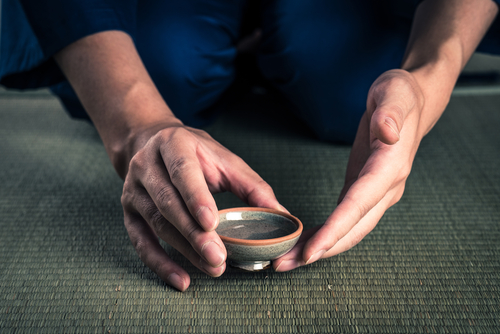Japanese Culture Club hosts Yonkoma Manga Workshop
On March 1, Kofi Bazzell-Smith, a self-taught artist and the president of the Japanese Culture Club at Parkland, led a workshop on Yonkoma Manga.
Bazzell-Smith taught students from a PowerPoint and the Japanese Culture Club handed out sushi. The workshop was held in D105 from 12 p.m. until 1 p.m..
To begin, the Japanese Culture Club handed out manga sheets. There were four panels. Each one was labeled for a specific drawing.
“There are four panels for four events,” Bazzell-Smith said. “Ki is the introduction. This is where the scene [is] set. Sho is the development where things are elaborated. The twist, or Ten, is where an unforeseen event occurs. Ketsu is the conclusion where everything is resolved.”
The Ki is not only where the scene is set, but also where the character, or characters, are introduced, and the manga is set in motion. The Sho elaborates and leads up to the twist of the story.
The Ten is something surprising and unexpected, and the Ketsu is where everything is resolved.
The students began to draw while Bazzell-Smith added commentary. He also walked around the room, answered questions, and gave pointers.
“Remember, the twist doesn’t have to be crazy,” Bazzell-Smith said. “The whole thing doesn’t have to be complicated. It can be as simple as you wish.”
Bazzell-Smith emphasized that attendees needed not worry about their drawing skill, saying that an understanding of the manga structure was what he hoped would be taken away from the event.
Yonkoma Manga is one of many Japanese art forms. The first manga is believed to have been created in either the 12th or 13th century, and Yonkoma Manga was first created in the 18th century.
“It’s basically comic books,” Bazzell-Smith said. “This is what comes before anime.”
Manga has a long and interesting history. Starting after World War II, manga took flight.
“The U.S. occupation of Japan had a significant role. During all of this there was a huge Japanese artist revolution,” Bazzell-Smith said.
Osamu Tezuka is known as the king of manga. Some of his creations are still used to this day in both manga and anime.
“Tezuka can be credited for a lot of modern manga and even anime characteristics,” Bazzell-Smith said. “He created the more photographic views–such as from the side. It was more life-like…He also created the big eyes seen in modern anime and manga.”
Kishotenketsu is the backbone of Yonkoma Manga. Yonkoma Manga and Western storytelling are based on stark differences. Kishotenketsu is a four panel, or event-based, type of storytelling.
“Yonkoma is a four panel story,” Bazzell-Smith said. “It really isn’t just an art style, it is the Eastern style of storytelling. It contrasts Western stories because of what it is based on. Western stories are based on conflict whereas Eastern stories are not. Eastern stories are based more on an unforeseen event and how the characters react.”
As the workshop came to a close, Bazzell-Smith remarked upon the purpose of the workshop.
“The purpose of this is to understand the storytelling,” Bazzell-Smith said. “I want everyone here to delve into the Eastern storytelling world and understand it. I want all of you to be able to make a manga yourself, not just based on artistic skills, but on storytelling skills as well.”

